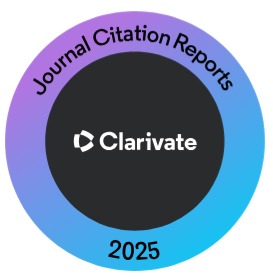Comparative Evolution of Animal and Human Coronaviruses, their Varieties and Virulence
Abstract
Coronaviruses are a group of enveloped viruses with single-stranded and RNA genomes that cause a wide-ranging spectrum of animal and human diseases. Initially, the pneumonia sort of disease was found in the Wuhan city of China, which later was identified as the novel coronavirus in November 2019. Recent studies have shown that HCOV, 229E, and OC43 develop flu-like symptoms which cause mild illness. This virus has then been declared a pandemic for its spread to several countries. Several types of research suggest that these were the birds and animals i-e bats and pangolins, which caused this virus to spread to humans. Human coronavirus has been attacking humans since 1962 by making changes in itself. However, Novel coronavirus has been proven to be a wide-spreading one. The SARSCOV is the most recent MERS-COV confirming that the coronavirus causes severe respiratory diseases, including fever and the common cold. As COVID-19 is pandemic worldwide, it primarily affects upper respiratory tracts (nose and throat), later on, infects lower respiratory tracts (lungs), and leads to pneumonia. SARS-COV-2 and MERS-COV2 are animal species that infect humans, causing severe illness. The reason behind this is that animal species can replicate at 37°C. The objective of the study is to collect reports from various databases for analysis. Globally, researchers have warned against the further spreading of the virus. If not controlled, this can result in more deaths and leave long-lasting consequences on global health and the economy. As compared with earlier episodes of SARS and MERS, the novel corona is more dangerous. Vaccination is required for future prevention against COV-19.
KEYWORDS: Coronavirus, pandemic, Chiroptera, Respiratory infection, SARS.
Published
How to Cite
Issue
Section
License
Copyright (c) 2021 Journal of Liaquat University of Medical & Health Sciences

This work is licensed under a Creative Commons Attribution-NonCommercial-ShareAlike 4.0 International License.
Submission of a manuscript to the journal implies that all authors have read and agreed to the content of the undertaking form or the Terms and Conditions.
When an article is accepted for publication, the author(s) retain the copyright and are required to grant the publisher the right of first publication and other non-exclusive publishing rights to JLUMHS.
Articles published in the Journal of Liaquat University of Medical & health sciences are open access articles under a Creative Commons Attribution-Noncommercial - Share Alike 4.0 License. This license permits use, distribution and reproduction in any medium; provided the original work is properly cited and initial publication in this journal. This is in accordance with the BOAI definition of open access. In addition to that users are allowed to remix, tweak and build upon the work non-commercially as long as appropriate credit is given and the new creations are licensed under the identical terms. Or, in certain cases it can be stated that all articles and content there in are published under creative commons license unless stated otherwise.























